
An Armenian user Artak Beglaryan tweeted about the events of January 13, 1990 in Baku (“Baku pogroms”) and shared 4 photos.
Faktyoxla Lab. has tried to clarify these events, which Armenian users call “Baku pogroms” and checked the authenticity of the photos.
First, let’s consider the events of January 13-15, 1990 in Baku.
If the foundations of the collapse of the USSR were laid in 1987, 1988 was marked by the first nailing of the coffin of the Soviet Union. Experts estimate that in 1988, when the collapse of the USSR began, there were about 20 conflict zones in the country. The most resonant of these was the discussions around Nagorno-Karabakh. (Alexander Yakovlev. Perestroika: 1985—1991. M., International Foundation "Democracy", 2008. P.182). In February 1988, the separatist tendencies in the Nagorno-Karabakh Autonomous Oblast reached its climax, and in particular the decision of the regional council to annex Nagorno-Karabakh to Armenia brought the tensions to their highest point. Assessing the events in Stepanakert (Khankendi), Gorbachev, the secretary-general of the Central Committee of the Communist Party of the Soviet Union, admitted at a meeting of the Politburo that "the impulse comes from Armenia." (Session of the Politburo: on events in Azerbaijan and the Armenian SSR.29.02.1988.//The National Security Archive at the George Washington University. Doc. 13152, p.89). However, practically nothing is being done to prevent this "impulse", and Moscow was even protecting separatist demands of the Armenians sometimes presenting them as "a show of openness and pluralism."
First, on February 28, 1988, the events in Sumgait took place under the direct organization and management of the Soviet special services. The killing of 26 Armenians and 6 Azerbaijanis in these events (the riots were organized by the Armenian Eduard Grigoryan and proved by the facts that he showed to) turned the national confrontation into an irreconcilable level.
In the autumn of the same year, Azerbaijani refugees expelled from the Nagorno-Karabakh Autonomous Oblast were added to the Azerbaijani refugees expelled from the Armenian SSR. (During those events, 70 Azerbaijani civilians were killed in the Gugark region of Armenia alone). Under the wave of refugees, the republic was in chaos. On December 1, 1989, the decision of the Supreme Soviet of Armenia "On the annexation of Nagorno-Karabakh to the Armenian SSR" removed the situation in Azerbaijan from the control of the Soviet authorities.
On the evening of December 31, the Soviet Union border facilities with Iran and Azerbaijan along the Araz River were destroyed on a 137-kilometer territory. Azerbaijanis living on both banks of the Araz crossed the river and met. Interestingly, the full-fledged border troops were indifferent to the incident and did not interfere in the destruction of the border with Iran by the Azerbaijani SSR.
Since the beginning of the conflict, 185 Azerbaijani villages have been destroyed in Armenia, 230,000 people have been expelled, 31,000 houses, 165 collective and state farms have been looted, 216 Azerbaijanis have been killed and 1,154 injured, mainly in Gugark and Masis districts.
Upon his arrival in Baku, Andrei Girenko, secretary of the Central Committee of the Communist Party of the Soviet Union, held a meeting in the republican party organization on January 6, 1990 and announced Moscow's position. On the same day, at the same time as the meeting in the Central Committee, the third congress-authorized conference of the Popular Front began in the building of the Academy of Sciences of the Azerbaijan SSR. A new board of 14 people, led by Abulfaz Aliyev (Elchibey), mainly representing the liberal camp within the movement, was elected. However, supporters of the radical line within the movement do not agree with this, and at a rally on January 13, information was announced about the establishment of the National Defense Council. Although the chairman of the council was Abulfaz Elchibey, the other four members (Etibar Mammadov, Nemat Panahov, Khalig Bahadur, Rahim Gaziyev) were directly radicals. "In essence, this meant declaration of a parallel power structure. He took control of the situation on the ground by armed resistance to the Armenian aggression. (Agayev R., Ali-zade Z. Azerbaijan. The end of the second republic (1988–1993), p.166).
During the rally, there were reports of Armenian looting in Baku and the failure of the authorities, especially the police, to intervene. After the looting began, Liskauskas, the USSR deputy interior minister in Baku, did not allow the use of the 12,000 personnel of the Internal Troops stationed in Baku against the looters and responded very briefly to the criticism: “Resolve the issue with Moscow. I need instructions and additional forces to establish order.” (Huseynov Vagif. More than one life. Second book, p. 276).
During the events of the night of January 13-14, 32 people of Armenian descent were killed. The fact that the authorities, especially the internal troops in Baku, did not try to prevent the killings was a sign of Moscow's intention. "On the evening of January 13, 1990 and on the night of January 14, 1990, there were cases of violence against the Armenian population in different parts of Baku. The next day there were also small-scale crimes. According to official data, 32 Armenians were killed in two days. There are also victims among Azerbaijanis…Preliminary investigation of the facts shows that the crimes were committed by special people who immediately disappeared from the scene. This shows that these people were prepared in advance. What forces are behind them, who is the organizer?” (Balayev Aydin, Rasim Mirza. January 20 events. Documents, positions, comments. Baku, 2000. P.56-57). It was a fact that the events were organized by the forces that wanted to declare a state of emergency in Baku.
Thus, mass looting, murders and robberies took place in Baku. The city was in turmoil. All this slowed down in the following days - on January 18-19, and stopped completely. This savagery, violence, death and robbery took place in front of the troops of the USSR Ministry of Internal Affairs, the State Security Committee of Azerbaijan and the Ministry of Internal Affairs in Baku at that time. All this was a sign of a cunning game. Authorities and power ministries were content to watch the looting, destruction and chaos. The flow of information sent to Moscow shows that the situation in Baku is uncontrollable and they are asking for help. In fact, it had one purpose: to send troops to Baku...
On the night of January 19, a state of emergency was declared in Baku without the knowledge of the people, and on January 20, a massacre was committed in Baku. All this suggests that the looting that took place in Baku on January 13-15 was organized by the USSR State Security Committee and officials of Armenian origin to lay the ground for the incursion of troops into Baku a week later.
Now let’s look at the photos shared by Artak Beglaryan.
In the first photo, we see several people getting off the airport’s passenger transportation vehicle.
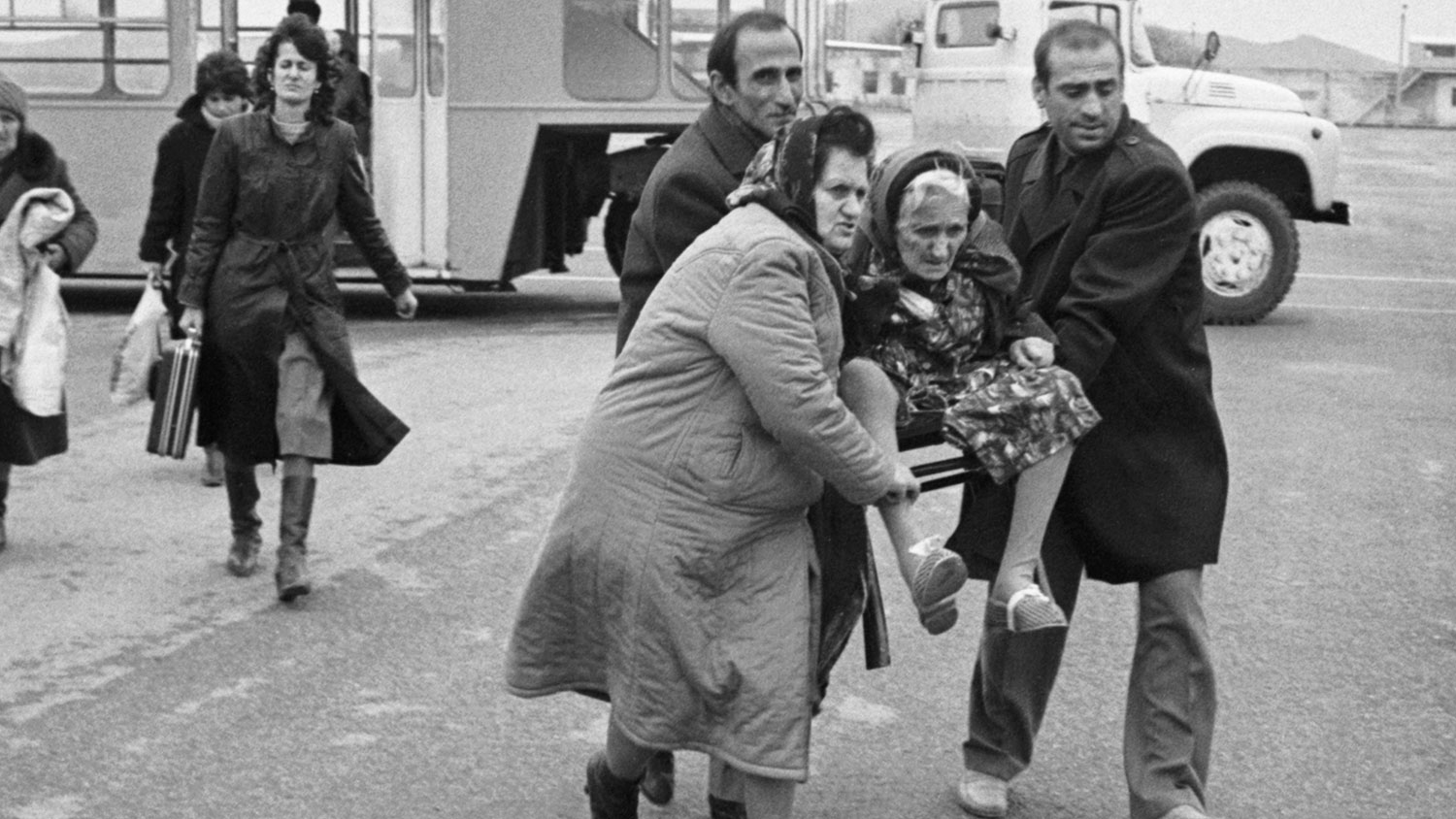
According to the investigation, the photo was taken at Krasnovodsk airport. What makes the photo touching is the image of an elderly woman carried on a chair. But if we compare this photo with the image of Azerbaijanis expelled from Armenia, we get the impression that the old woman on the chair looks like a real tourist.
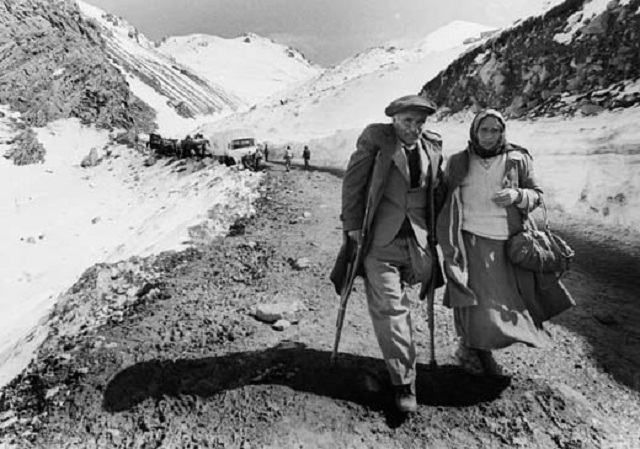
Zaur Babayev, who was studying at the Russian department of the journalism faculty at Baku State University at the time, said that although the rally was dispersed on January 5 and curfew was declared, there was no agitation or danger in the city. "But the Armenians were departing. It was as if someone had told them something and they were leaving. They either sold their homes or left their homes empty in the hope of returning. They seemed more informed than us. When asked why you are moving, they replied that they were worried that the events in Sumgait would happen again. But we did not see any sign that these events would take place. Until January 13, there were few Armenians left in the city." (Source)
The second photo shared by Beglaryan shows two people crying.
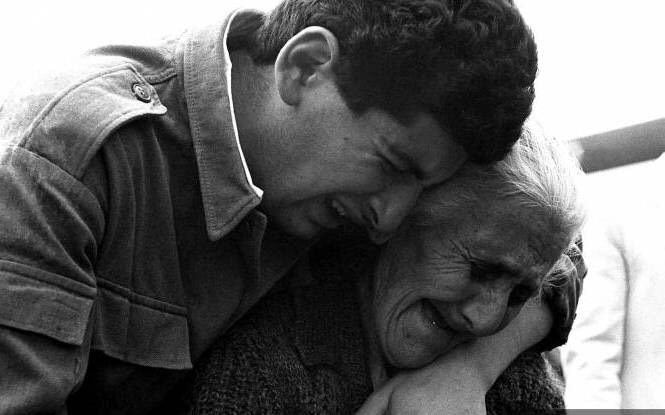
The young man in this photo is in a military uniform. The neck of the military uniform gives grounds to say so. In 1990, neither Armenians nor Azerbaijanis had an army, and it is absurd to claim that at that time a young man wore a military uniform other than the uniform of the Soviet army. The photo was most likely taken during the First Karabakh War.

That is, this photo has nothing to do with the events of January 13-15, 1990.
Let’s look at the third photo shared.
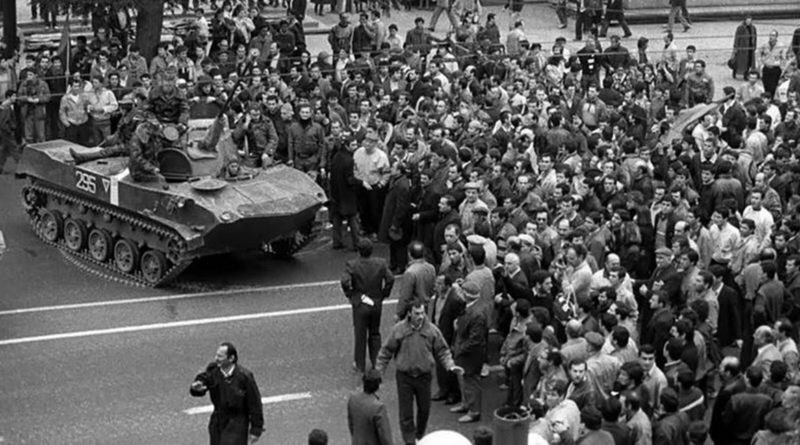
This photo has nothing to do with Baku or Azerbaijan. The photo was taken on April 9, 1989 on Rustaveli Avenue in Tbilisi.
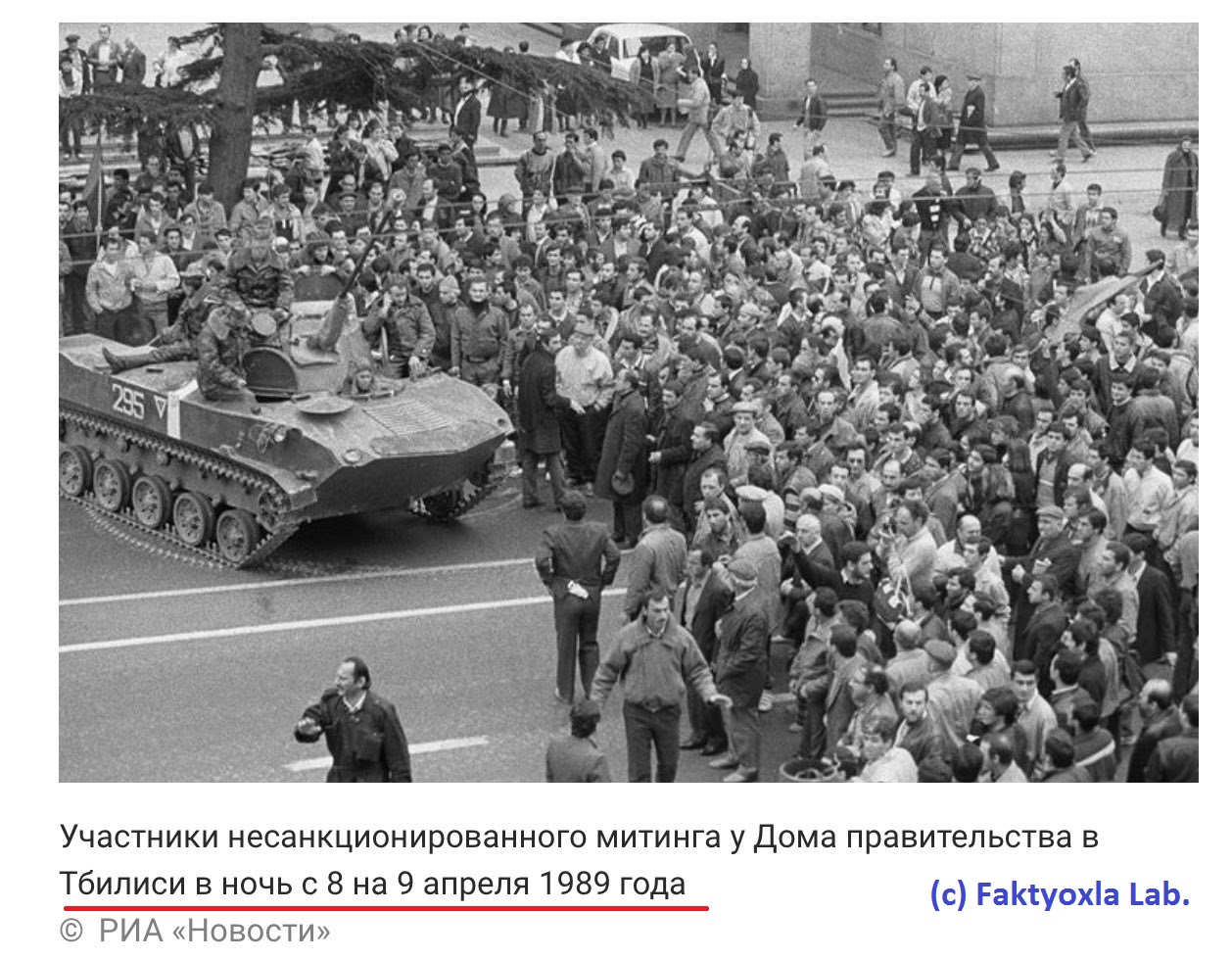
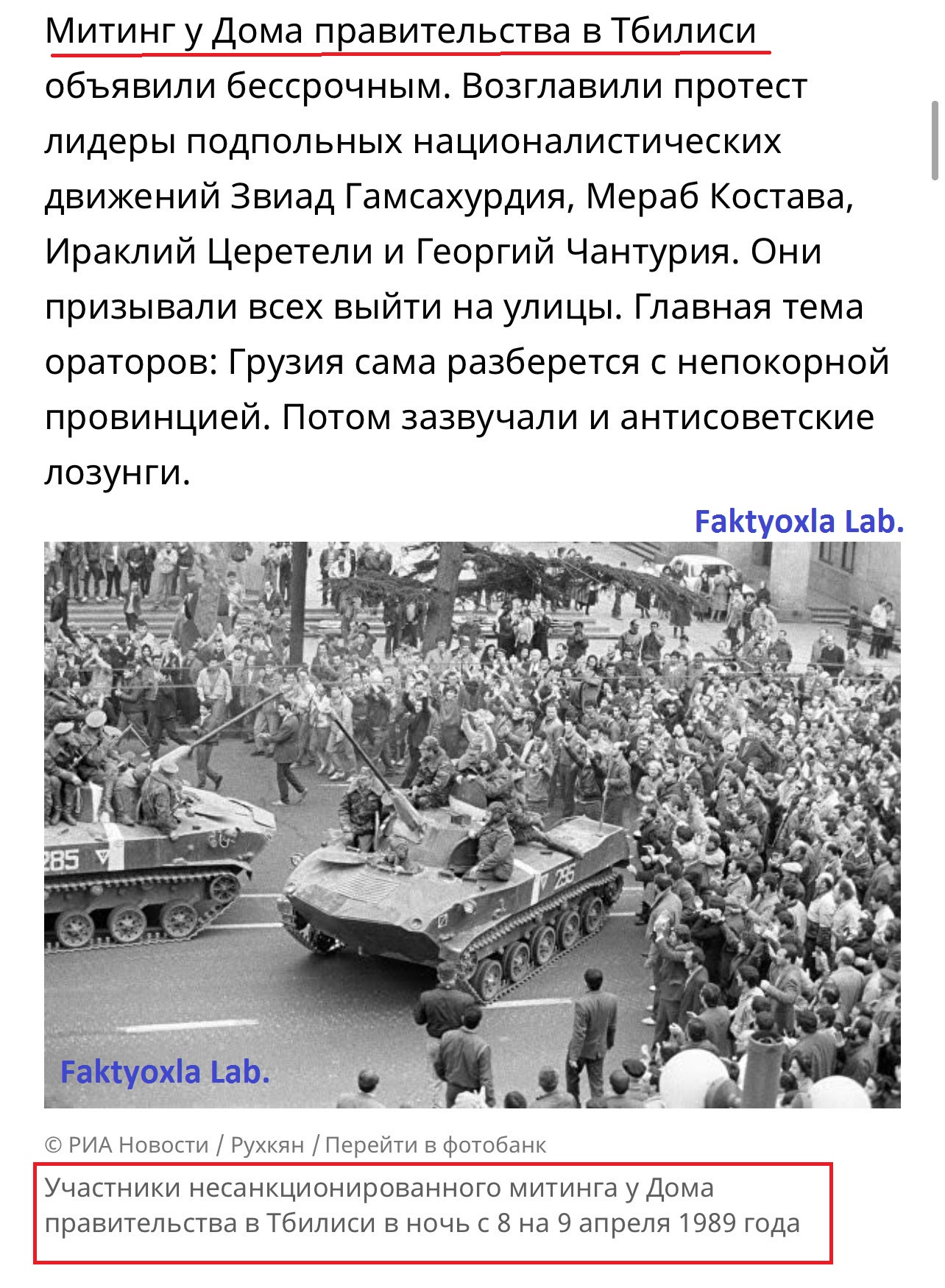
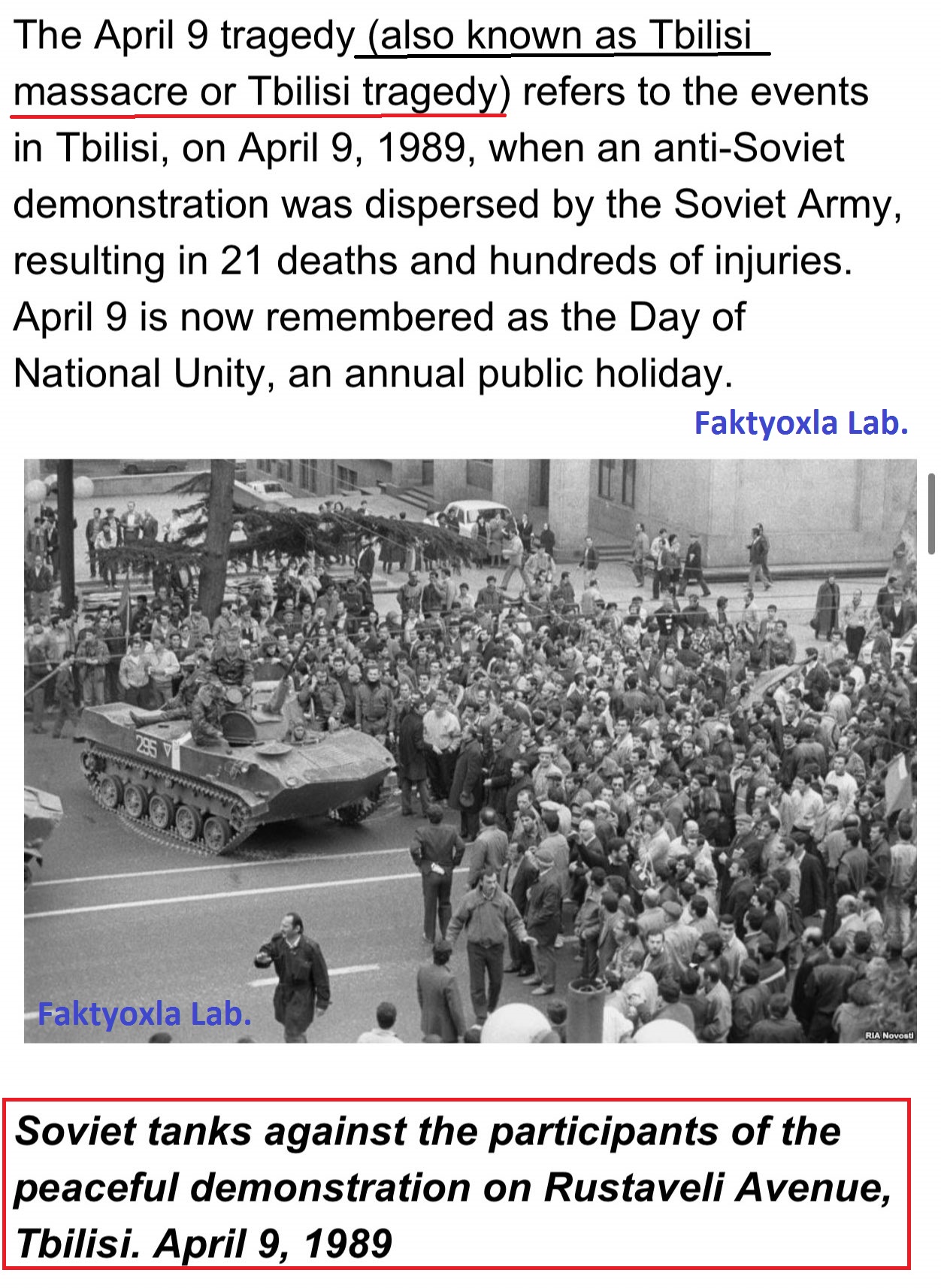
Finally, let’s move to the fourth photo.
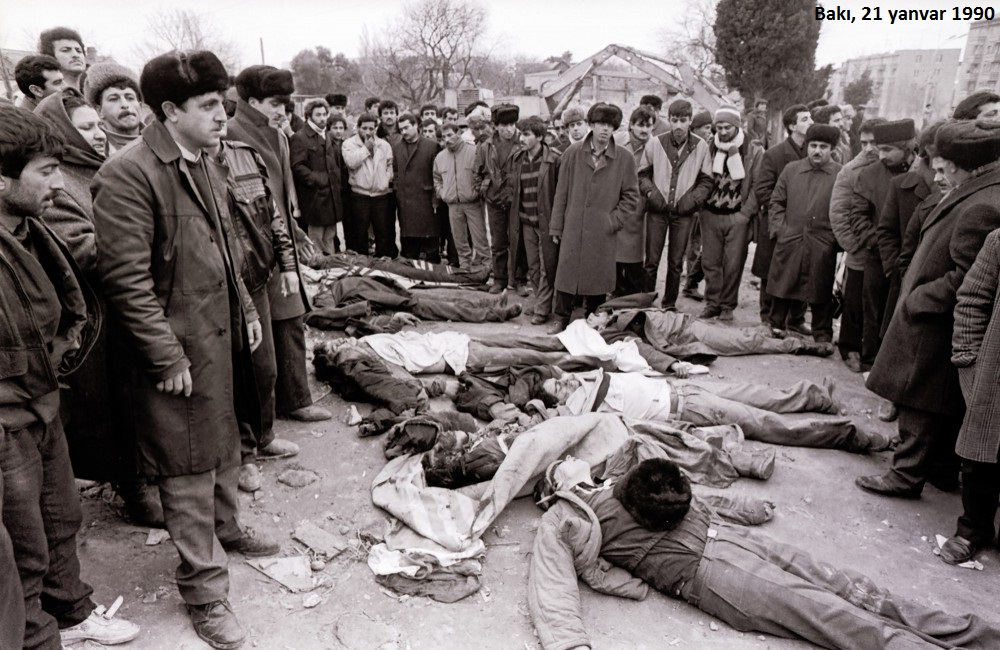
It is interesting that not only Beglaryan, but also other Armenian users easily deceive readers who are unaware of the events.
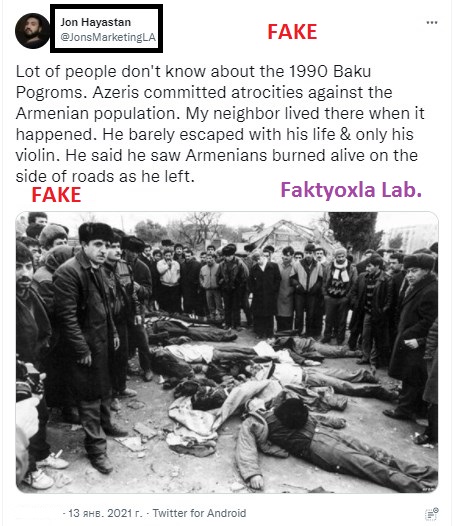
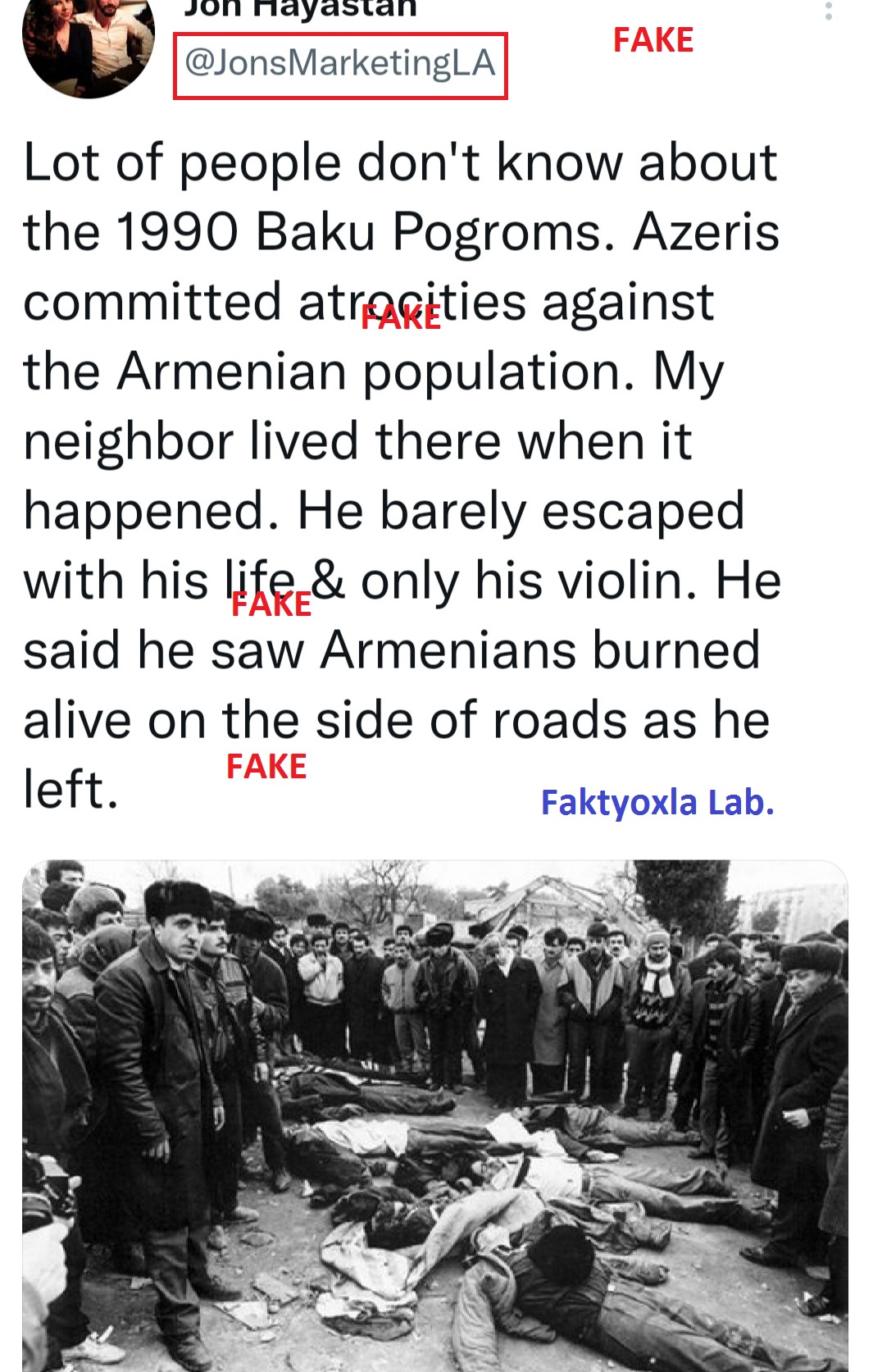
These photos were taken on January 21, 1990 in Baku. The author of the photo is Azerbaijani photographer Asim Talib.
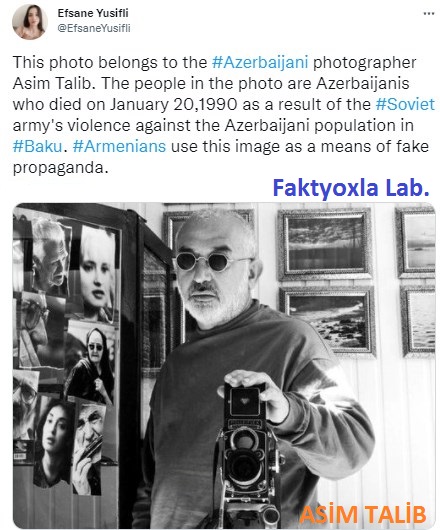
We received the following information about the young man seen in that photo: His name is Aladdin, and he worked as a taxi driver in the 2nd Taxi Department. He is originally from the Amasia region of the Armenian SSR.

We show only one of the hundreds of facts that Armenians took photos of Azerbaijanis and spread false news.
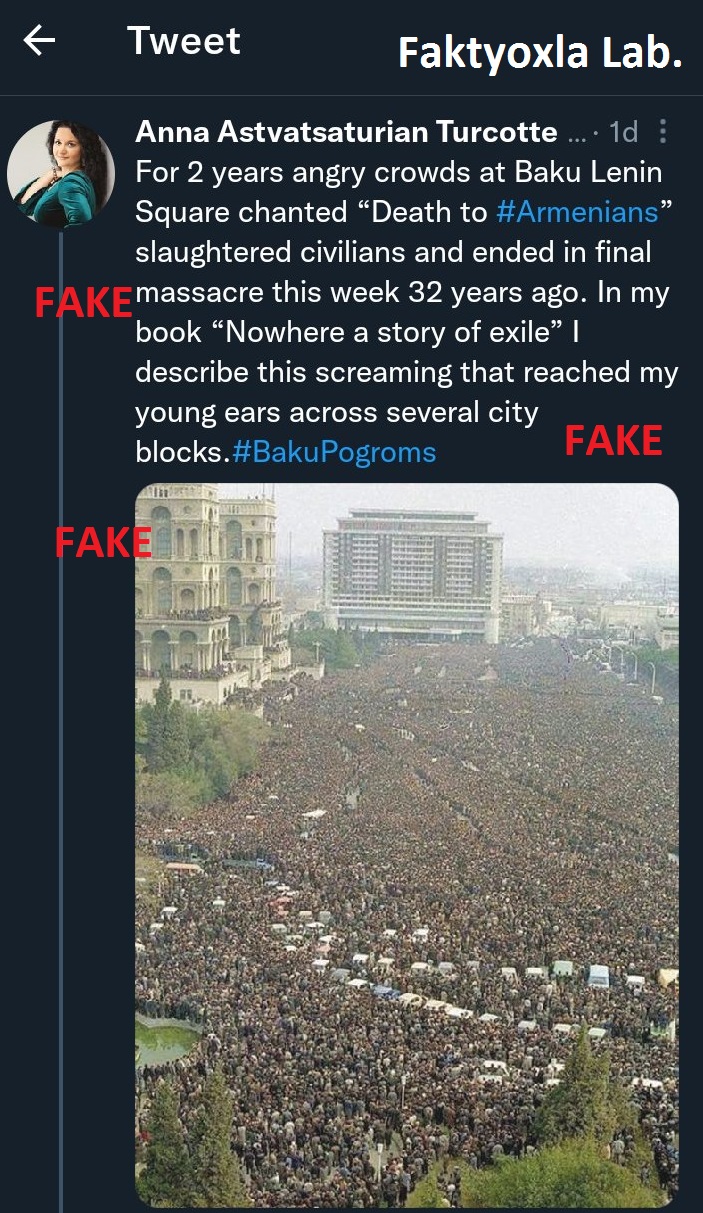
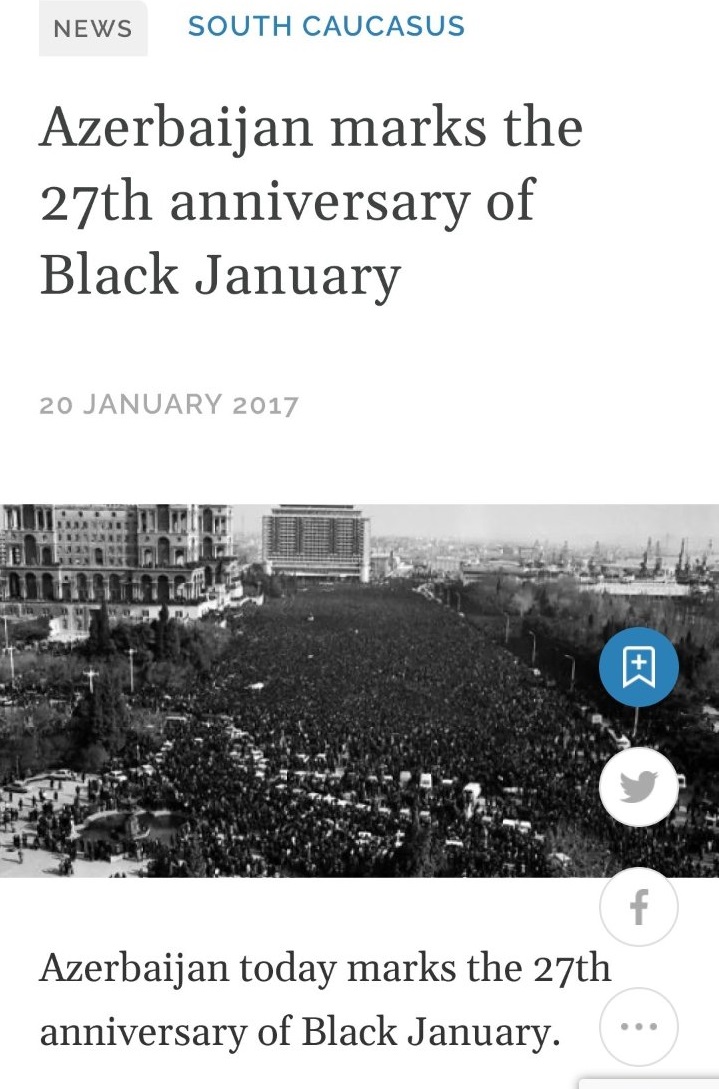
These photos reflect the completely false information spread by Armenians and the Soviet State Security Committee to the central and foreign media. The photos allege that before the events of January 20, the word "Russians" was written on the homes of Russians in Azerbaijan, using them to attract the attention of the crowd.
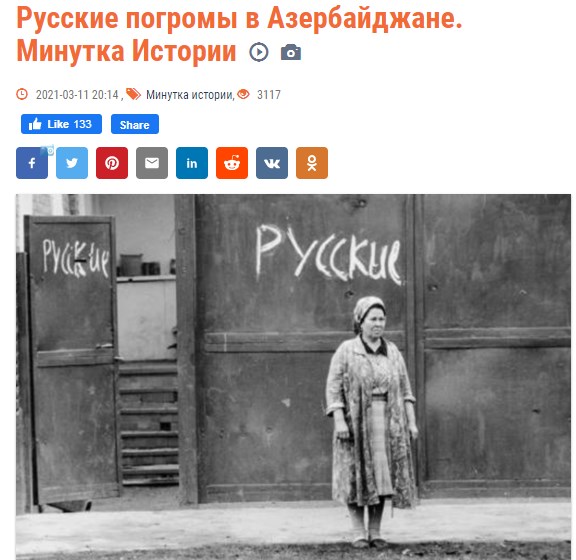
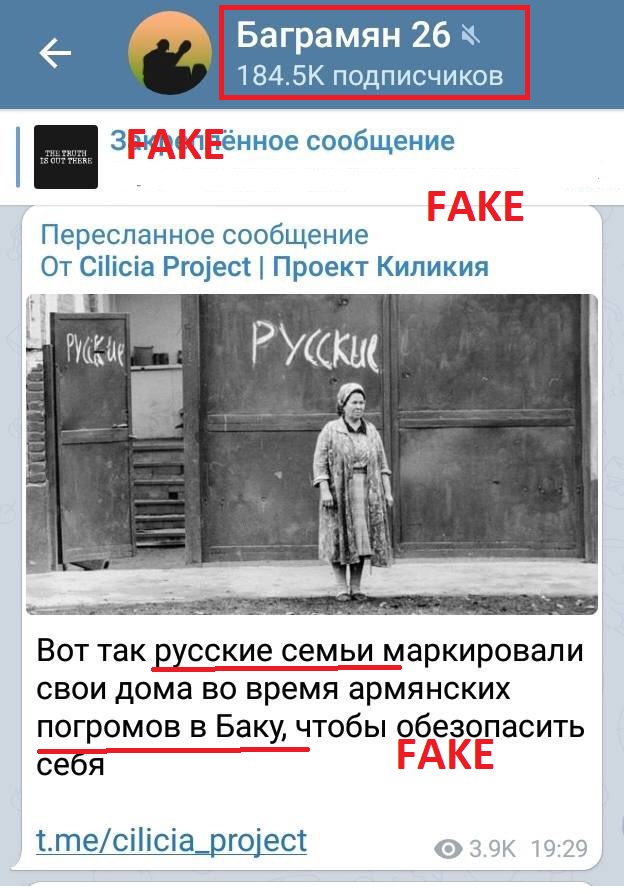
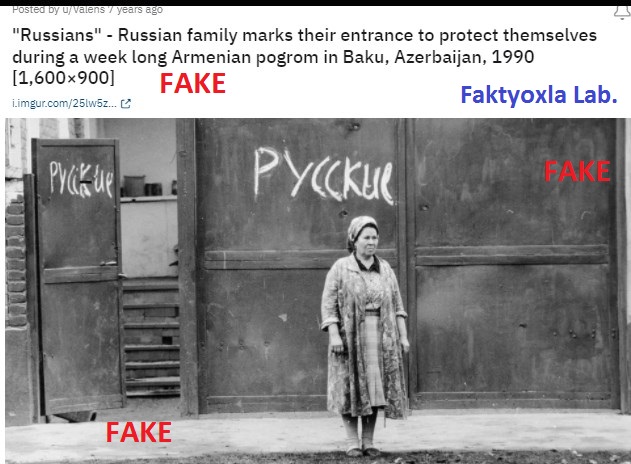
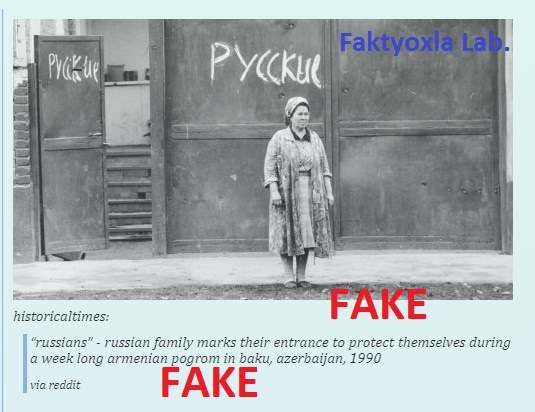
No further comment is required to investigate this false information. Screenshots say everything themselves.

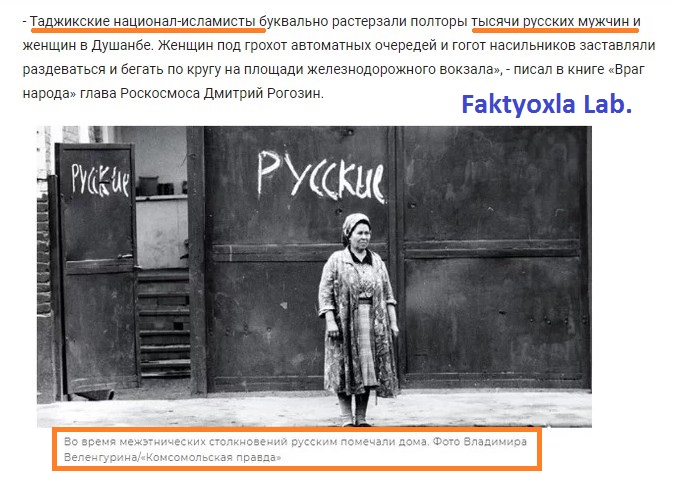

Conclusion: The words written by Artak Beglaryan are of manipulative nature, the facts have been distorted. The shared photos have nothing to do with the events that took place in Baku.




















